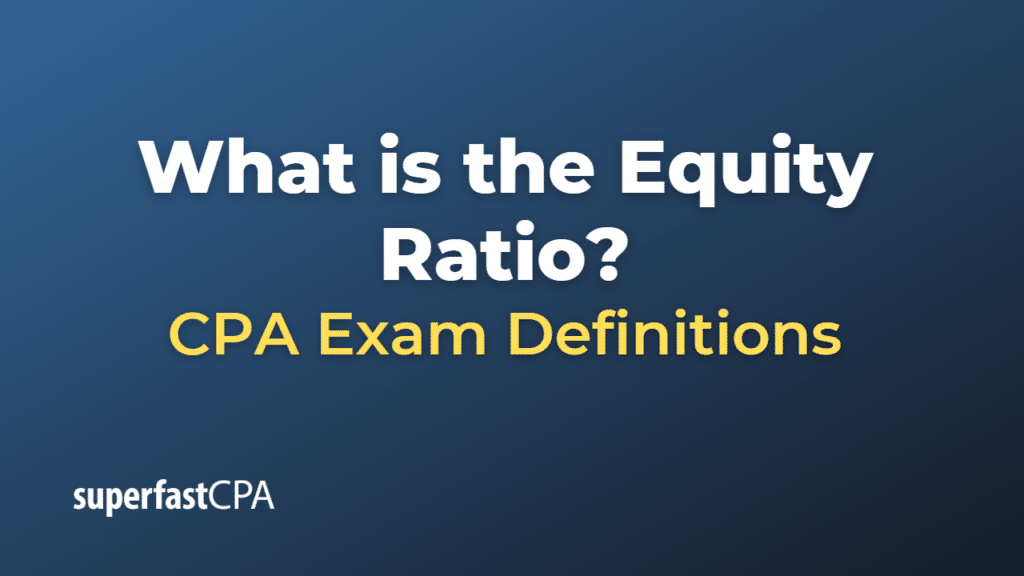Equity Ratio
The equity ratio, also known as the equity-to-assets ratio, is a financial metric that measures the proportion of a company’s total assets financed by equity. It reflects the financial leverage of a company and shows the degree to which the company’s operations are funded by owners’ funds versus creditors’ funds.
The formula for the equity ratio is:
\(\text{Equity Ratio} = \frac{\text{Total Equity}}{\text{Total Assets}} \)
A higher equity ratio means a larger proportion of the company’s assets are funded by the shareholders’ equity, indicating lower financial risk since the company has less debt. This might be seen as positive by investors and creditors because it shows the company is less dependent on external debt.
A lower equity ratio indicates a smaller proportion of the company’s assets are funded by equity and that the company relies more on debt to finance its assets. While debt can provide leverage to increase returns, it also increases risk as it must be paid back regardless of the company’s financial situation.
As with any financial metric, it’s important to compare the equity ratio across companies within the same industry to get meaningful insights, as the acceptable or typical ratio can vary widely across different industries.
Example of an Equity Ratio
Let’s say we have two companies: Company A and Company B.
Company A has total assets of $5 million and total equity of $2 million. Therefore, its equity ratio would be:
\(\text{Equity Ratio of Company A} = \frac{\text{Total Equity}}{\text{Total Assets}} \)
\(= \frac{\text{\$2 million}}{\text{\$5 million}} = \text{0.4 or 40%} \)
Company B, on the other hand, has total assets of $5 million and total equity of $4 million. Therefore, its equity ratio would be:
\(\text{Equity Ratio of Company B} = \frac{\text{Total Equity}}{\text{Total Assets}} \)
\(= \frac{\text{\$4 million}}{\text{\$5 million}} = \text{0.8 or 80%} \)
In this example, Company B has a higher equity ratio, meaning it has a larger proportion of its assets financed by equity, suggesting it is less reliant on debt and potentially less risky from a financial perspective.
On the other hand, Company A has a lower equity ratio, indicating it is more reliant on debt to finance its assets. This could suggest a higher risk, but it could also mean higher potential returns if the company is successfully using its debt for profitable ventures.
As always, this ratio is one of many financial metrics and should be used alongside others to get a complete picture of a company’s financial health.













